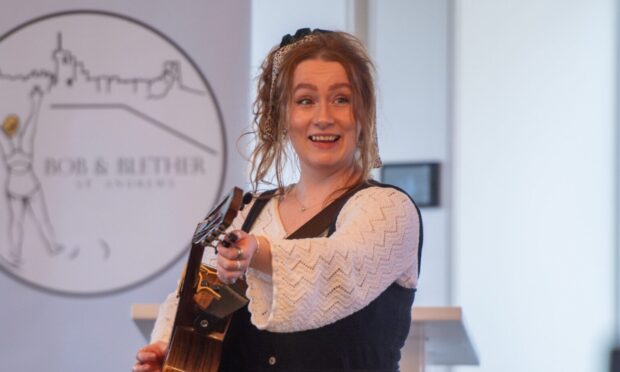University of Dundee’s current Lamb Gallery exhibition explores unlikely connections between the globally famous Rio Carnival and those enjoyed in Broughty Ferry during the twenties and thirties.
While the original carnivals marked the beginning of fasting during Lent, Bacchanal – Le We Be Free focuses on the influence of Caribbean culture – how harvest celebrations held by slaves on sugar-cane plantations led to what it describes as the “world’s most iconic street party”.
Fairs, masques and pageants
As well as fun times at the Ferry, the show takes in a range of local fairs, masques and pageants down the years, along with activities closer to campus, including Duncan of Jordanstone College of Art and Design’s Revels (promising outfit Pink Floyd headlined in ’68) and Student Charities’ Campaigns.
At its heart, though, Bacchanal shows how slaves on islands such as Barbados and Trinidad used carnivals to maintain their African heritage, notably through creating drums for percussion, their parties becoming more spectacular after emancipation.
Behind the show is Cat Dunn, a Barbadian-Scottish curator who specialises in social justice.
Studying for a PhD in fine art at DJCAD, Bacchanal’s organiser explains how she has been inspired by her research and story-telling from her childhood, leading to the exhibition’s title.
“Throughout the world there are aspects of carnival that are seen as dramatic, but it is about having a good time,” Cat says.
“It was a time when slaves were allowed a few hours respite from toil, as the plantation owners had their wild and drunken celebrations.”
With support from university colleagues, Cat illustrates the story of carnival with flyers, programmes, artworks and even record sleeves – plus a mask from her own collection.
The display also includes a replica steel-plan drum created by Glasgow-based artist Ashanti Harris, itself used in a performance work held this summer at the university.
While carnivals at the Ferry may seem a long way from the Caribbean islands, as black and white photographs from the era attest and Cat admits, the curator insists there are similarities.
Fancy dress, music and laughter
Both presented opportunities to don fancy dress, often to join processions, while music and laughter were always encouraged.
“Broughty Ferry was a haven for wealthy barons,” she says. “It was a holiday resort at one point considered ‘the Brighton of the North’. As a result, there are parallels with its brass bands and various shows.”
Cat also points out that events such as fairs and sideshows provided rare opportunities for Dundonians to view people of colour, certainly judging from newspaper reports from the time.
As well as exploring these topics, though, she hopes to share the warmth of her own upbringing.
“On carnival days it doesn’t matter what colour your skin is, your race or ethnicity,” Cat says.
“It doesn’t matter if you’re rich or poor. It’s all about the joy of movement, limin’ with your mates, the colour of the costumes, the food and, of course, a tot of rum. It’s a magical moment to be in. I hope visitors feel a small bit of that vibrancy!”
Bacchanal – Le We Be Free runs at the Lamb Gallery, University of Dundee until February 4.













